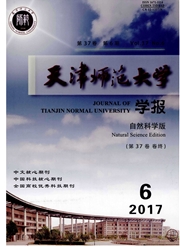

 中文摘要:
中文摘要:
基于2000年、2005年、2010年和2013年4个时相的SPOT/NDVI数据,运用Arc GIS10.2和景观生态学的分析方法,对三北防护林工程区植被景观格局的变化进行了研究。结果表明:景观特征上,14年来工程区植被景观形态趋向复杂,中高度及高度覆盖景观优势度提高。时间上,2000-2005年的植被覆盖状况持续改善,2005-2010年植被覆盖状况局部地区有所退化,2010-2013年的植被覆盖状况重新趋向良性方向发展。空间上高度覆盖斑块类型呈现出数量增加、面积扩大、等级升高三方面变化,主要在东北地区、华北地区、黄土高原南部和准噶尔盆地形成了高等级植被景观团簇。研究结果揭示了三北防护林工程区植被覆盖情况和景观格局变化规律,旨在为工程区生态环境的改善和社会经济价值的创造提供参考。
 英文摘要:
英文摘要:
Based on the GIMMS / NDVI data of 2000,2005,2010 and 2013,by using Arc GIS9. 3 and analyzing method of landscape ecology,this study investigated the vegetation landscape pattern change in Three- North Shelter Belt Program's( TNSBP). In terms of landscape characteristics,the whole research area of vegetation landscape form tended to be complex by 14 years. Mid- high and high vegetation coverage landscape had increased. Temporally,From 2000 to 2005,the vegetation coverage condition had continued to be improved,while from 2005 to 2010 the vegetation coverage condition had deteriorated in several regions,but from 2010 to 2013 vegetation coverage condition developed into the benign direction. Spatially,high vegetation coverage landscape patches experienced three kinds of changes( increasing number,expanding area and increasing grade). A high class of vegetation landscape clusters were formed mainly in Northeast China,North China,and the southern Loess Plateau and Junggar Basin. The results revealed the landscape pattern changes of vegetation coverage in the TNSBP,which could provide references for the construction of the local ecological environment and creating social and economic value.
 同期刊论文项目
同期刊论文项目
 同项目期刊论文
同项目期刊论文
 期刊信息
期刊信息
